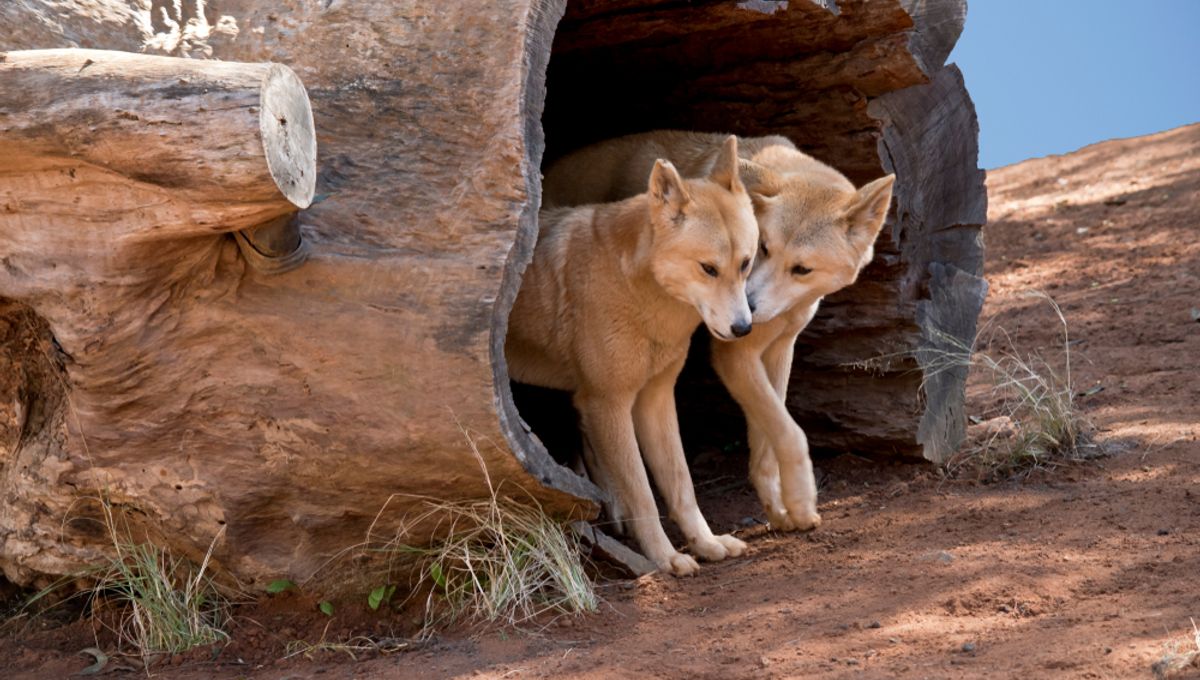
Indigenous people in Australia may have domesticated dingoes thousands of years ago, with new evidence indicating that the dogs were given human-like burials by ancient communities. These findings may help to shift the long-standing impasse in the debate over whether dingoes are a truly wild species or just a domestic dog lineage that has become feral.
Examining animal bones from an ancient rock shelter at the Curracurrang archaeological site, the study authors noticed the presence of numerous dingo skeletons. Radiocarbon dating revealed that the oldest of the interred dogs was between 2,000 and 2,300 years old, while subsequent generations continued to bury dingoes at the site until the colonial era.
“Not all camp dingoes were given burial rites, but in all areas in which the burials are recorded, the process and methods of disposal are identical or almost identical to those associated with human rites in the same area,” explained study author Dr Loukas Koungoulos in a statement. “This reflects the close bond between people and dingoes and their almost-human status.”
While interactions between Aboriginal communities and dingoes were observed by European settlers as far back as the 19th century, the new findings suggest that this relationship may have run much deeper than previously thought. According to early colonial accounts, Indigenous Australians regularly took pups from wild dens for use as guard dogs or hunting aids, although the animals typically returned to the wild once they reached sexual maturity at about one year old.
However, some of the skeletons at Curracurrang belonged to dingoes that were between six and eight years old, indicating that these dogs may have inhabited the human settlement into old age. Meanwhile, severely worn teeth suggest these animals chewed on large bones, meaning they were probably fed scraps by their human companions, while the presence of dingo pups in some of the burials implies that the dogs may have bred within the camp.
“By the time Europeans settled in Australia, the bond between dingoes and Indigenous people was entrenched. This is well known by Indigenous people and has been documented by observers,” said study author Professor Susan O’Connor. “Our work shows that they had long-lasting relationships prior to European colonisation, not just the transient, temporary associations recorded during the colonial era.”
These relationships feed into the discussion over whether dingoes are simply a type of domestic dog or a wild species in their own right. According to some observers, dingoes don’t meet the traditional criteria for domestication as they don’t display biological changes resulting from selective breeding, nor are they dependent upon humans.
It’s also true that dingoes differ genetically from domestic dogs, holding fewer of the starch-digestion genes that are enriched in most pet pooches. However, according to the study authors, these differences “could be the result of genetic drift and natural selection during millennia of isolation and feral or wild-living lifestyles in Australia.”
The issue is further complicated by the fact that while the dingo has a skeletal morphology unlike that of domestic dogs, its skull is more similar to pet breeds than to wolves or other wild dog species.
Summarizing the findings at Curracurrang, the researchers say that “although the evidence for traditional or biological [dingo] domestication is inconclusive,” it’s clear that the site’s ancient occupants formed life-long relationships with “tame dingoes”.
“The tamed dingoes of Curracurrang meet many of the criteria of domestication,” conclude the authors, before conceding that “this does not necessarily comment on the dingo’s taxonomic status as a whole.”
The study is published in the journal PLOS ONE.
Source Link: Ancient Aboriginal People Knew Dingoes Were Good Doggos And Buried Them Like Humans